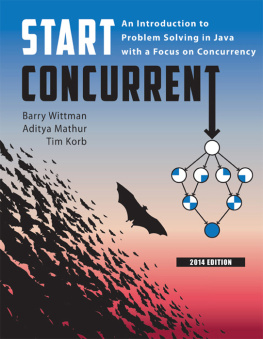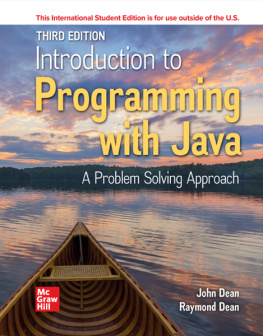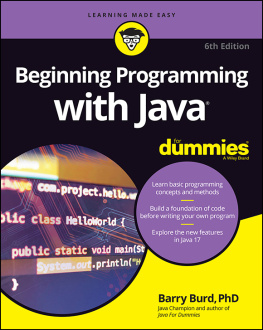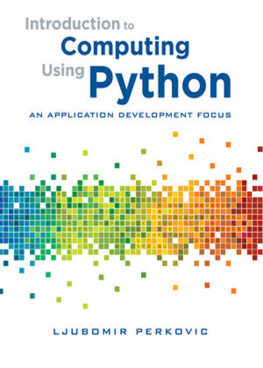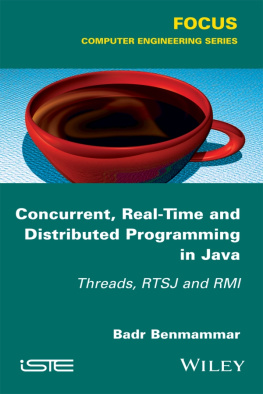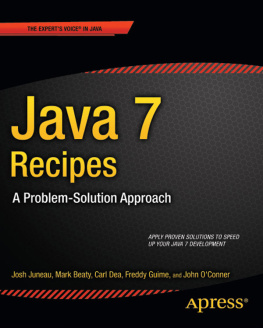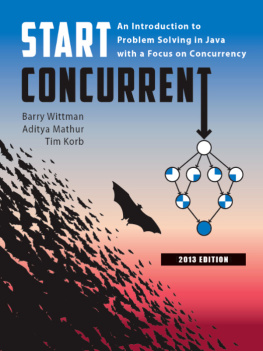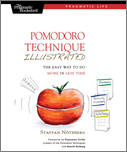Barry Wittman Aditya Mathur - Start Concurrent 2014: An Introduction to Problem Solving in Java with a Focus on Concurrency
Here you can read online Barry Wittman Aditya Mathur - Start Concurrent 2014: An Introduction to Problem Solving in Java with a Focus on Concurrency full text of the book (entire story) in english for free. Download pdf and epub, get meaning, cover and reviews about this ebook. City: West Lafayette, year: 2014, publisher: Purdue Scholarly Publishing Services, genre: Home and family. Description of the work, (preface) as well as reviews are available. Best literature library LitArk.com created for fans of good reading and offers a wide selection of genres:
Romance novel
Science fiction
Adventure
Detective
Science
History
Home and family
Prose
Art
Politics
Computer
Non-fiction
Religion
Business
Children
Humor
Choose a favorite category and find really read worthwhile books. Enjoy immersion in the world of imagination, feel the emotions of the characters or learn something new for yourself, make an fascinating discovery.
- Book:Start Concurrent 2014: An Introduction to Problem Solving in Java with a Focus on Concurrency
- Author:
- Publisher:Purdue Scholarly Publishing Services
- Genre:
- Year:2014
- City:West Lafayette
- Rating:3 / 5
- Favourites:Add to favourites
- Your mark:
Start Concurrent 2014: An Introduction to Problem Solving in Java with a Focus on Concurrency: summary, description and annotation
We offer to read an annotation, description, summary or preface (depends on what the author of the book "Start Concurrent 2014: An Introduction to Problem Solving in Java with a Focus on Concurrency" wrote himself). If you haven't found the necessary information about the book — write in the comments, we will try to find it.
Multicore microprocessors are now at the heart of nearly all desktop and laptop computers. While these chips offer exciting opportunities for the creation of newer and faster applications, they also challenge students and educators. How can the new generation of computer scientists growing up with multicore chips learn to program applications that exploit this latent processing power? This unique book is an attempt to introduce concurrent programming to first-year computer science students, much earlier than most competing products. This book assumes no programming background but offers a broad coverage of Java. It includes over 150 numbered and numerous inline examples as well as more than 300 exercises categorized as conceptual, programming, and experiments. The problem-oriented approach presents a problem, explains supporting concepts, outlines necessary syntax, and finally provides its solution. All programs in the book are available for download and experimentation. A substantial index of at least 5000 entries makes it easy for readers to locate relevant information. In a fast-changing field, this book is continually updated and refined. The 2014 version is the seventh draft edition of this volume, and features numerous revisions based on student feedback. A list of errata for this version can be found on the Purdue University Department of Computer Science website. Read more...
Abstract: Annotation
Multicore microprocessors are now at the heart of nearly all desktop and laptop computers. While these chips offer exciting opportunities for the creation of newer and faster applications, they also challenge students and educators. How can the new generation of computer scientists growing up with multicore chips learn to program applications that exploit this latent processing power? This unique book is an attempt to introduce concurrent programming to first-year computer science students, much earlier than most competing products. This book assumes no programming background but offers a broad coverage of Java. It includes over 150 numbered and numerous inline examples as well as more than 300 exercises categorized as conceptual, programming, and experiments. The problem-oriented approach presents a problem, explains supporting concepts, outlines necessary syntax, and finally provides its solution. All programs in the book are available for download and experimentation. A substantial index of at least 5000 entries makes it easy for readers to locate relevant information. In a fast-changing field, this book is continually updated and refined. The 2014 version is the seventh draft edition of this volume, and features numerous revisions based on student feedback. A list of errata for this version can be found on the Purdue University Department of Computer Science website
Barry Wittman Aditya Mathur: author's other books
Who wrote Start Concurrent 2014: An Introduction to Problem Solving in Java with a Focus on Concurrency? Find out the surname, the name of the author of the book and a list of all author's works by series.

